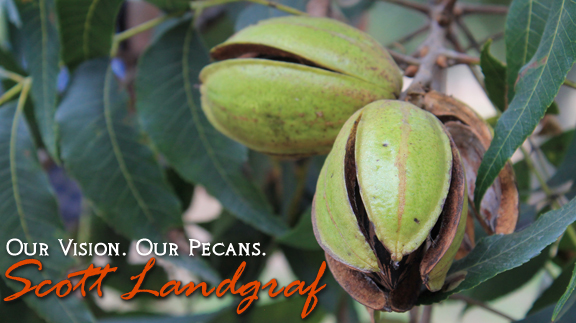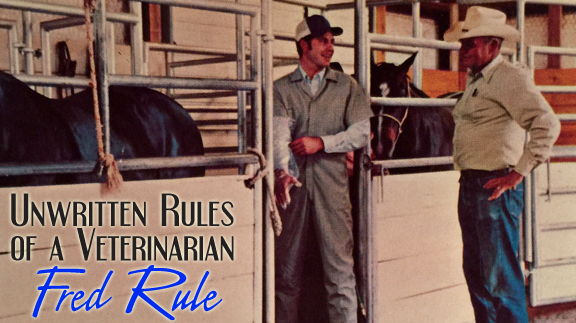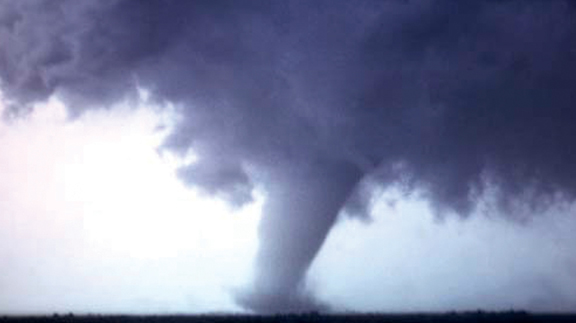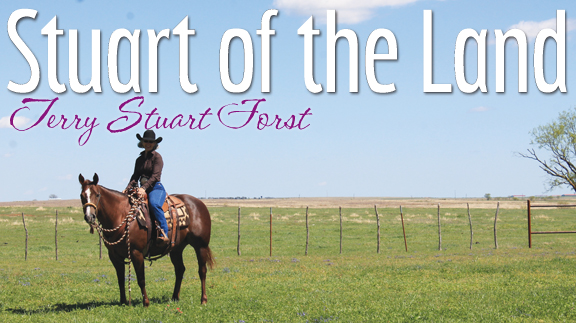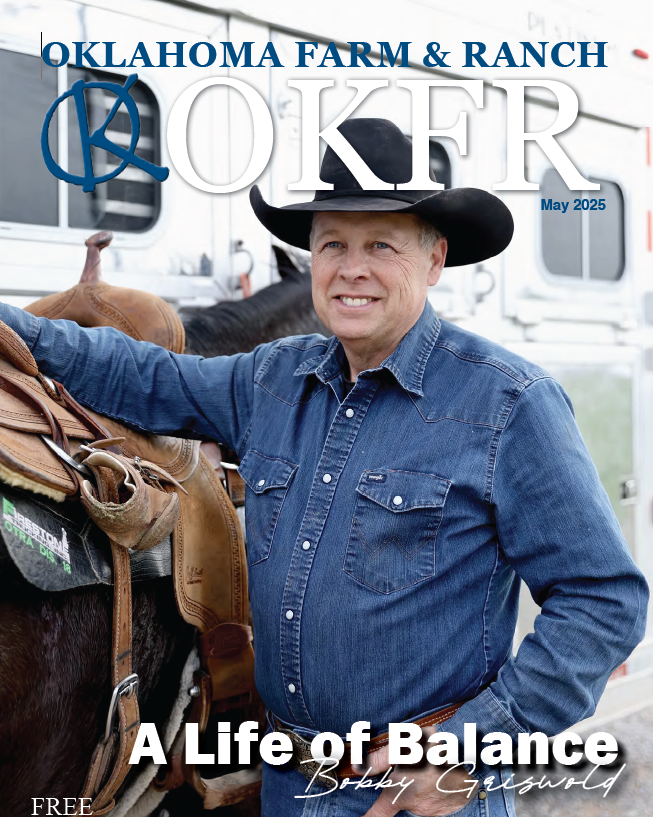Country Lifestyle
Oklahoma Trivia

By Judy Wade
Every Oklahoman knows the lyrics: “Oklahoma, where the wind comes sweeping down the plains” as they come from the state song, a song that was made famous worldwide by Rodgers and Hammerstein’s Broadway musical “Oklahoma.”
Originally Indian Territory, Oklahoma joined the Union Nov. 16, 1904 as the 46th state. With 69,903 square miles, ranking it 20th in size, it has a population of 3,850,568, the 28th largest in the nation.
Its name came from the Choctaw “okla,” meaning people, and “humma,” meaning red—thus Oklahoma.
With a rich history, the state has adopted many official symbols, some of which are well known, while some are unique.
“Sooners” is a nickname known to almost everyone, but how it came about is interesting. In 1889 the government opened unassigned land in Indian Territory to settlement.
A Land Rush was held, with everyone supposedly starting at one time to assure equal opportunity to claim land. However, many people left “sooner” than they were supposed to—thus the nickname.
Oklahoma’s flag is one of the more elaborate ones in the nation. Adopted in 1925, it honors Native Americans and their ancestors. The sky blue background is the color of the flag Choctaw soldiers carried in the Civil War. In the center is an Osage battle shield made of buffalo skin and adorned with eagle feathers and white crosses representing the stars in the sky and higher purposes in Native American culture. A gray ceremonial pipe and olive branches symbolize peace. Beneath the shield is “OKLAHOMA” in white.
No less ornate is the Great Seal of the State. A large five-point star is at the center surrounded by olive branches. Within stands Columbia, symbol of justice and statehood.
On either side of her are a pioneer farmer and a Native American clasping hands under the scales of justice. Above their heads is the state motto, and the bottom reads 1907.
In the uppermost point of the star is the seal of the Chickasaw Nation followed from left to right in the other points by the seals of the Cherokee, Creek, Seminole and Choctaw Nations, the Five Civilized Tribes that inhabited the state.
In the spaces between the points are 45 stars representing the other states of the Union, with the large center star representing Oklahoma’s entry into the Union in 1907 as the 46th state.
The state has adopted more than 40 official state symbols—everything from animals to monuments.
Some of these include the official state animal, the bison; game animal, white-tailed deer; game bird, wild turkey; furbearing animal, raccoon; amphibian, the bullfrog; bird, scissor-tailed flycatcher; butterfly, black swallowtail; bass, white or sand bass; insect, honeybee; and reptile, collared lizard.
Oklahoma even has an official dinosaur, the acrocanthosaurus atokensis, and an official fossil, the saurophaganax maximus.
Oklahoma has been the birthplace of many famous musicians and has numerous official state musical symbols aside from “Oklahoma” being the official state song. Others include children’s song, “Oklahoma, My Native Land;” country and western song, “Faded Love;” rock song, “Do You Realize?;” gospel song, “Swing Low, Sweet Chariot;” waltz, “Oklahoma Wind;” and folk song, “Oklahoma Hills” by Woody Guthrie.
The fiddle is the official state musical instrument, and the drum serves as the official percussion instrument. Lynn Riggs Players represent the state theater. The square danced is the state dance, and the state poem is “Howdy Folks.”
Hourglass selenite is the official state crystal, and the rose rock is the state rock. Others include floral emblem, mistletoe; flower, Oklahoma rose; wildflower, Indian blanket; tree, redbud; and grass, Indian grass. The official state soil is port silt loam.
Theresa Farrington is the state’s caricature artist, and we even have an official cartoon character, Gusty, created in 1954 by Don Woods as a way to illustrate his weather forecasts.
Tulsa proclaims itself as the Oil Capital of the World and is home to the state’s official monument, the 76-feet-tall Golden Driller.
Official foods were not forgotten: vegetable, watermelon; fruit, strawberry; beverage, milk.
We even have an official state meal consisting of “an extensive menu reflecting the state’s historical and present-day agriculture and the cultural backgrounds of Oklahoma residents,” according to statesymbolsusa.org.
The menu includes fried okra, cornbread, barbecued pork, squash, biscuits, sausage and gravy, grits, corn, strawberries, chicken fried steak and black-eyed peas.
The state motto, Labor Omni Vincit, means “Work Conquers All.” After that official state meal, who can work?
Country Lifestyle
Farm Dogs & Table Scraps

What’s Safe and What’s Not?
Growing up on a farm, our dogs were tough. They roamed the pastures, slept under the barn, and ate just about anything they could get their paws on—whether we meant for them to or not. I’ll admit, I never thought twice when one of our old cow dogs snatched a biscuit off the table or licked up a spill from the barn floor. I’ve even seen a dog steal a whole rib bone off a plate and trot off like he’d won the lottery. And somehow, they always seemed fine.
But here’s the thing—just because they survived doesn’t mean it was safe. For every farm dog that lucked out, there’s another that wasn’t so fortunate. Some human foods can be downright toxic to dogs, and a little bit of bad luck (or a smaller, more sensitive dog) can turn a harmless snack into an emergency.
Common toxic foods lying around the farmhouse
If you’ve got a farm dog—or any dog, really—you need to be aware of the dangers lurking in everyday foods. Some of the biggest culprits include:
Chocolate – The darker it is, the worse it is. Even a little can cause vomiting, seizures, or worse.
Grapes & Raisins – No one’s exactly sure why, but they can cause kidney failure fast.
Onions & Garlic – In large enough amounts, these can destroy red blood cells, leading to anemia.
Xylitol (Found in Sugar-Free Gum & Candy) – This artificial sweetener can send a dog’s blood sugar crashing and cause liver failure.
Alcohol – Even small amounts can be deadly to dogs, affecting their nervous system much more than it does ours.
Bones from Cooked Meat – While not necessarily toxic, they can splinter and cause serious internal injuries.
Macadamia Nuts – These can lead to weakness, vomiting, and even paralysis in dogs.
What to do if your dog eats something toxic
First, don’t panic—but don’t ignore it either. If you know your dog ate something dangerous, call your vet immediately. They can tell you whether to induce vomiting or if it’s something that requires urgent care. If it’s after hours, contact the ASPCA Animal Poison Control Center (888-426-4435) or the Pet Poison Helpline (855-764-7661).
Prevention is always the best medicine, so keep toxic foods out of reach. That might mean keeping the trash can secured, making sure kids don’t slip the dog a treat under the table, or just being more mindful of what’s left on the counter.
Our farm dogs might have been lucky, but luck isn’t a great strategy when it comes to their health. A little awareness goes a long way in making sure they stay happy, healthy, and ready for the next day’s work.
For more information
ASPCA Animal Poison Control: www.aspca.org/pet-care/animal-poison-control
Pet Poison Helpline: www.petpoisonhelpline.com
Visit www.akc.org/expert-advice/nutrition/foods-your-dog-should-never-eat
Country Lifestyle
Summer Squash and Corn Chowder

By Lacey Vilhauer
Total time: 40 minutes
Servings: 6-7
Ingredients
- 6 slices bacon, cooked and crumbled and 1 1/2 Tbsp rendered bacon fat reserved
- 1 1/2 lbs yellow squash, chopped (about 3 medium)
- 2/3 cup thinly sliced celery
- 1 cup diced onion
- 1 Tbsp flour
- 2 cloves garlic, minced
- 2 3/4 cup milk (I used 1%)
- 5 cups canned or fresh cut corn (from about 6 ears corn), divided
- 1/2 cup heavy cream
- 1 1/2 tsp chopped fresh thyme (or 1/2 tsp dried)
- 3/4 tsp salt, then more to taste
- 1/4 tsp freshly ground black pepper, then more to taste if desired
- 3/4 cup shredded cheddar cheese, for serving
- Chopped green onion for garnish (optional)
Instructions
Heat 4 tsp reserved bacon fat in a large pot over medium-high heat. Add celery and onion and sauté 2 minutes then add the squash.
Saute until tender, about 6 minutes, adding in garlic and flour during last 2 minutes of sauteing. Reduce heat slightly.
Add 1 1/2 cups milk, 2 cups of the corn, thyme, salt and pepper to the sauteed veggies.
To a blender add remaining 3 cups of corn, remaining 1 1/4 cups milk and the cream. Process in blender until nearly smooth (about 30 seconds).
Add pureed mixture to pot and stir to blend. Cook until mixture reaches a light boil.
Serve warm with shredded cheese, crumbled bacon and sliced green onions if desired.
Country Lifestyle
Western Housewives – May 2025
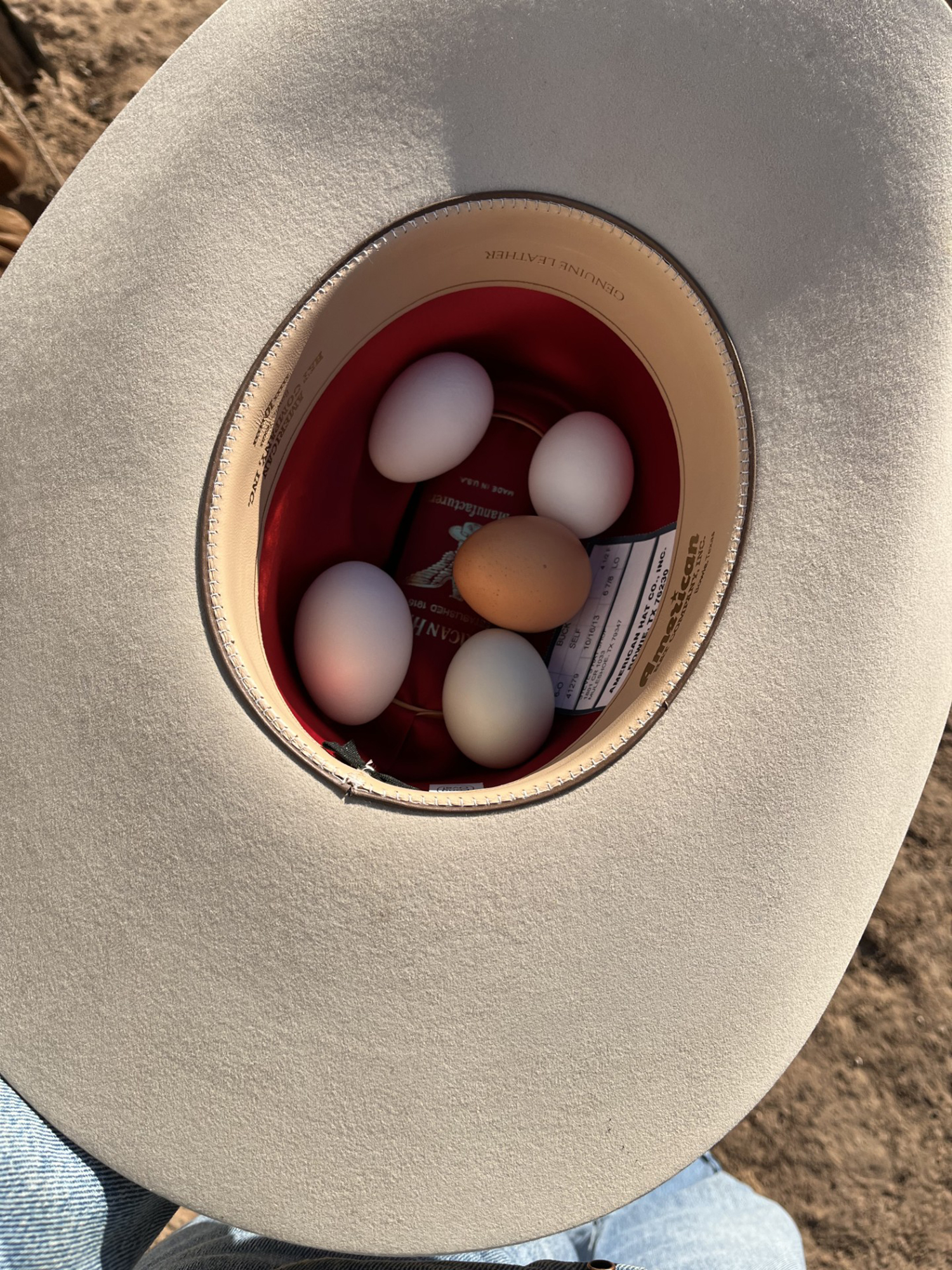
By Summer McMillen
All my married life I have thought that when husbands all got together horseback after a hard days work they were probably rating their wives on a scale from one to ten based on their various capabilities. Did Wife A have a good hat crease? Was Wife B good help in the branding pen? Was Wife C an excellent mother? Was Wife D hospitable to everyone? Could Wife E make a decent gallon of sweet tea? Did Wife F keep a tidy saddle house?
Presumably, when Wife B did not live up to Wife A there was a fist fight followed by wife shaming of Husband B. His status amongst the cowboys immediately fell and he would be behind for the rest of his life in his cowboy career.
He would come home ashamed his wife couldn’t flambé a decent bananas foster and she couldn’t hoolihan either. He would be distraught and said wife would feel his pain.
Of course, this never happened to me like I thought it would. My husband always came home with a smile on his face and I’m pretty sure “flambé” isn’t even in a cowboys vocabulary.
Nonetheless, these imaginary fights and social rankings have plagued my brain for years. It has caused me to always be in competition with myself to be the very best at everything I did. Which I have eventually realized is a trait of women all around the world.
While we are cooking a four course meal for our families we start to think about how we actually should be practicing heading steers instead.
While we are practicing our horsemanship we start to think about how we should actually be preparing a nutritious and elaborate meal for our families.
It is a constant battle that women have created and proceeded to fight for centuries.
One day the inner battle got to me and I finally broke down as we were riding wheat pasture and confessed to my husband my guilt. I was so sorry that I wasn’t a better cowgirl. I was so sorry that the house was a mess. I was so sorry that I would never be on The Cowboy Channel. I was so sorry that I had lost his good pair of gloves. (Except I didn’t actually mean to confess that last part. Some things are just better left unknown.) I apologized again and again and told him I was sorry and he probably never wanted to bring his friends over for supper ever again.
Instead of consoling me, he just started looking at me like I was crazy. Which is what all good husbands do.
He stopped his horse and looked at me and said “Do you know how cowboys rate each other’s ranch wives?”
So many thoughts started filling my brain. Was it looks? Gentleness? Laundry speed? Work ethic?
Then he revealed their secret. “Cowboys rate each other’s wives by how well they can cook eggs for breakfast.”
His point of course, was that men don’t think about each other’s wives. As long as they get their eggs for breakfast. In another twist of irony, my husband taught me how to fry the perfect egg. What can I say? It’s a man’s world.
Since then, I have let go of my irrational fears and doubt and have simply been living life. It’s all anyone can do. I may not team rope the best. I may get my fingers when I’m trying to dally and I may not have the tidiest saddle house. But I try hard at everything I do and I do it all out of love for my family and finally, myself.
So, if you’re a woman this Mother’s Day and you catch yourself feeling down amongst life constant pressures just remember you are not alone. You can almost guarantee there is a woman in every household that needs a little pick me up. Maybe you should just go outside. Maybe you should sit down and count your blessings. Or, maybe you should have your husband fry you some eggs.
-

 Attractions8 years ago
Attractions8 years ago48 Hours in Atoka Remembered
-

 Country Lifestyle9 months ago
Country Lifestyle9 months agoJuly 2017 Profile: J.W. Hart
-

 Country Lifestyle9 years ago
Country Lifestyle9 years agoThe House a Treasure Built
-

 Country Lifestyle3 years ago
Country Lifestyle3 years agoThe Two Sides of Colten Jesse
-

 Outdoors7 years ago
Outdoors7 years agoGrazing Oklahoma: Honey Locust
-

 Equine8 years ago
Equine8 years agoUmbilical Hernia
-

 Outdoors5 years ago
Outdoors5 years agoPecan Production Information: Online Resources for Growers
-

 Farm & Ranch7 years ago
Farm & Ranch7 years agoHackberry (Celtis spp.)


